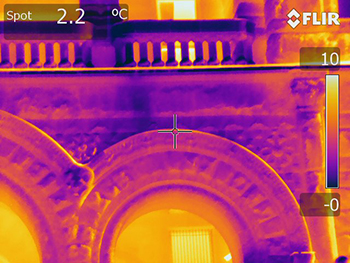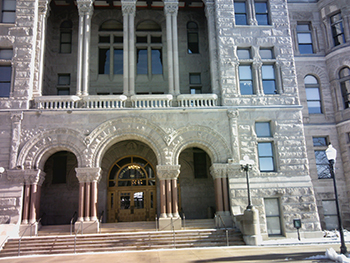Infrared thermal imaging accurately measures surface temperatures. When a thermal flux passes through a solid substrate anomalies in the surface temperature can provide information on internal structures. Successful application of IRT requires a full understanding of boundary conditions in order to interpret results. Under favorable conditions, IRT can detect excess moisture, voids, delaminations, incipient spalls, and locate steel reinforcing, piping, and conduits.
The West Side Market features a Guastavino vault over a large market
hall. Guastavino vaults are made of multiple layers of clay
tile. IRT techniques located roof leaks and identified
delaminations of the vault tile layers at the corners were high internal
stress concentrations occur due to thermal movements and dimension
changes in clay masonry due to humidity. The IRT image below shows
a warm area in the vault taken in January. Delamination of the
vault layers results in a thin air gap between layers, insulating the
tile on the surface of the vault from the cold attic above. It is
speculated that the delamination is caused by expansion of the clay
masonry subsequent to construction. For more information, read "The
Application of Infrared Thermography to Condition Assessments of
Guastavino Vaulting," Atti della
Fondazione Giorgio Ronchi, Anno LXIX, no. 4 - Luglio-Agosto
2014.
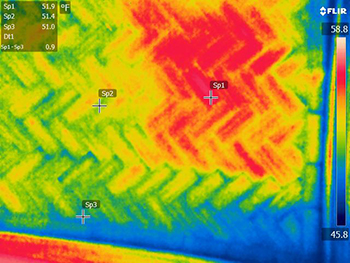
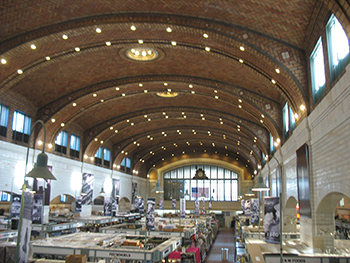
Damage to finishes on stone vaults indicated moisture infiltration. IRT, combined with water leakage testing, identified the source of water entry due to poorly installed flashings at the intersection of the roof eave and a parapet wall. The IRT image below shows cooler areas at the edge of the vault. These cooler areas developed 1/2 hour after water was sprayed on to the step flashing of the roof above. The termination of the step flashing was short of the roof eave and had no drip edge. Water droplets clinging to the underside of the flashing wetted the masonry, and subsequently diffused through the stone of the vault.
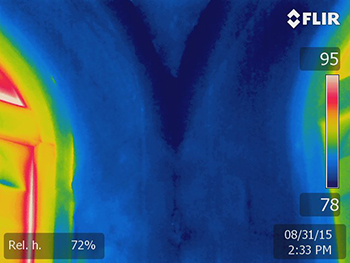
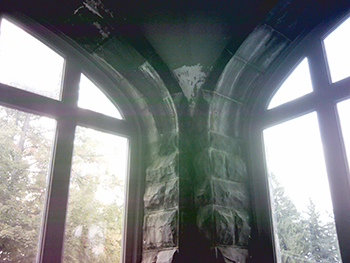
IRT's ability to remotely sense surface temperatures enabled inexpensive mapping of the moisture infiltration pattern of the observation deck of Perry's Monument. A telephoto lens was used to observe conditions over 300 feet above grade. IRT permitted a rapid understanding of moisture infiltration conditions without expensive scaffolding or crane access.
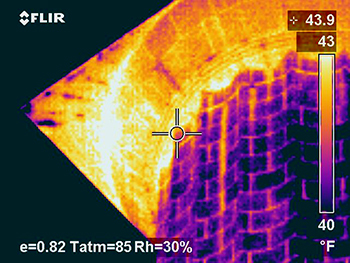

Soldered lap joints on copper flashings without provisions for thermal expansion, installed in the 1980s, have failed. Also, traffic bearing membranes used to waterproof loggia floors have not been renewed. IRT quickly identified locations with significant evaporation of water from the stone, resulting in cooler surface temperatures. In the pair of images below, the IRT image locates cool areas where water draining off of the loggia seeps into a failed flashing reglet and wets the masonry below.
